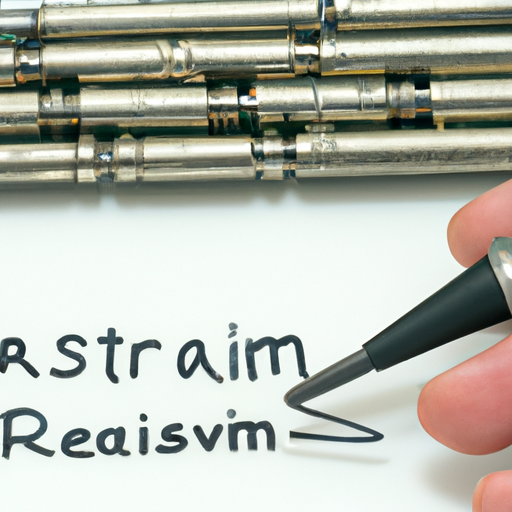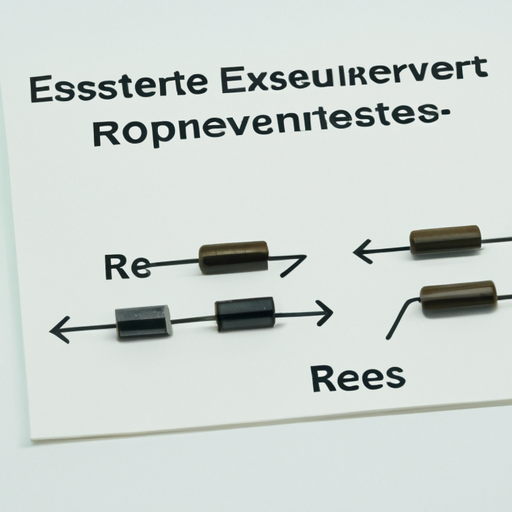What are the production processes of mainstream resistors and resistors?
What are the Production Processes of Mainstream Resistors?
I. Introduction
Resistors are fundamental components in electronic circuits, serving the critical function of controlling the flow of electric current. By providing resistance, they help to regulate voltage and current levels, ensuring that electronic devices operate safely and efficiently. The production of resistors involves a series of intricate processes that transform raw materials into reliable components used in everything from household appliances to advanced computing systems. This blog post will explore the various types of resistors, the raw materials used in their production, the detailed manufacturing processes, quality control measures, environmental considerations, and future trends in the resistor industry.
II. Types of Resistors
Resistors can be broadly categorized into fixed and variable types, each serving distinct purposes in electronic applications.
A. Fixed Resistors
1. **Carbon Composition Resistors**: These resistors are made from a mixture of carbon and a binding material. They are known for their high energy absorption and are often used in applications where high pulse loads are expected.
2. **Film Resistors**: This category includes:
- **Carbon Film Resistors**: Created by depositing a thin layer of carbon on a ceramic substrate, these resistors offer better stability and tolerance than carbon composition types.
- **Metal Film Resistors**: These resistors use a thin film of metal, providing superior accuracy and stability, making them ideal for precision applications.
- **Thin Film vs. Thick Film**: Thin film resistors are manufactured using advanced techniques that allow for tighter tolerances, while thick film resistors are more cost-effective and widely used in general applications.
3. **Wirewound Resistors**: Made by winding a metal wire around a ceramic or fiberglass core, these resistors can handle high power levels and are often used in power applications.
B. Variable Resistors
1. **Potentiometers**: These adjustable resistors allow users to vary resistance and are commonly used in volume controls and tuning circuits.
2. **Rheostats**: Similar to potentiometers but designed to handle higher currents, rheostats are used in applications requiring variable resistance.
C. Specialty Resistors
1. **Thermistors**: Temperature-sensitive resistors that change resistance with temperature variations, commonly used in temperature sensing and control applications.
2. **Photoresistors**: Also known as light-dependent resistors (LDRs), these components change resistance based on light exposure, making them useful in light-sensing applications.
III. Raw Materials Used in Resistor Production
The production of resistors relies on a variety of raw materials, each chosen for its specific properties.
A. Conductive Materials
1. **Carbon**: Used in carbon composition and carbon film resistors, carbon provides a stable and reliable resistance.
2. **Metal Oxides**: Commonly used in film resistors, metal oxides offer excellent thermal stability and are resistant to environmental factors.
3. **Metal Alloys**: Utilized in wirewound resistors, metal alloys provide high conductivity and durability.
B. Insulating Materials
1. **Ceramics**: Often used as substrates for film resistors, ceramics provide excellent insulation and thermal stability.
2. **Epoxy Resins**: These materials are used for encapsulating resistors, providing protection against moisture and mechanical stress.
3. **Plastics**: Used in various resistor types for insulation and housing, plastics are lightweight and cost-effective.
IV. Production Processes
The production processes for resistors vary depending on the type being manufactured.
A. Carbon Composition Resistors
1. **Mixing Raw Materials**: The production begins with mixing carbon powder with a binding agent to create a homogenous mixture.
2. **Molding and Shaping**: The mixture is then molded into the desired shape, typically cylindrical or rectangular.
3. **Curing and Finishing**: The molded resistors are cured to harden the material, followed by finishing processes to ensure uniformity and quality.
B. Film Resistors
1. **Substrate Preparation**: A ceramic substrate is prepared, cleaned, and coated with a conductive layer.
2. **Film Deposition Techniques**: Techniques such as sputtering or chemical vapor deposition (CVD) are used to deposit a thin film of resistive material onto the substrate.
3. **Laser Trimming and Finishing**: The resistance value is fine-tuned using laser trimming, followed by finishing processes to ensure the resistors meet specifications.
C. Wirewound Resistors
1. **Wire Selection and Preparation**: High-quality metal wire is selected and prepared for winding.
2. **Winding Process**: The wire is wound around a ceramic or fiberglass core, creating the desired resistance.
3. **Insulation and Encapsulation**: The wound resistor is insulated and encapsulated to protect it from environmental factors.
D. Variable Resistors
1. **Design Considerations**: Variable resistors are designed with specific applications in mind, considering factors like resistance range and power rating.
2. **Assembly Processes**: Components are assembled, including the resistive element, wiper, and housing.
3. **Testing and Calibration**: Each variable resistor undergoes testing and calibration to ensure it meets performance standards.
V. Quality Control in Resistor Production
Quality control is paramount in resistor production to ensure reliability and performance.
A. Importance of Quality Control
Quality control processes help identify defects and ensure that resistors meet industry standards and customer expectations.
B. Testing Methods
1. **Electrical Testing**: Resistors are tested for resistance values, tolerance, and power ratings to ensure they function correctly.
2. **Environmental Testing**: Resistors undergo tests for temperature stability, humidity resistance, and other environmental factors to ensure durability.
C. Standards and Certifications
Manufacturers often adhere to international standards such as ISO and IEC, ensuring that their products meet safety and performance criteria.
VI. Environmental Considerations
As the electronics industry evolves, so do the environmental considerations associated with resistor production.
A. Sustainable Materials and Practices
Manufacturers are increasingly adopting sustainable materials and practices, such as using eco-friendly resins and reducing waste during production.
B. Waste Management in Resistor Production
Effective waste management strategies are implemented to minimize the environmental impact of resistor production, including recycling scrap materials.
C. Recycling of Resistors
End-of-life resistors can be recycled to recover valuable materials, reducing the need for new raw materials and minimizing electronic waste.
VII. Future Trends in Resistor Production
The resistor industry is poised for significant advancements driven by technology and innovation.
A. Advances in Materials Science
Research into new materials, such as nanomaterials, may lead to resistors with improved performance characteristics and reduced sizes.
B. Automation and Industry 4.0
The integration of automation and smart manufacturing technologies is streamlining production processes, enhancing efficiency, and reducing costs.
C. Emerging Technologies in Resistor Design
Innovations in resistor design, such as flexible and printed resistors, are expanding the possibilities for applications in wearable technology and other emerging fields.
VIII. Conclusion
Understanding the production processes of mainstream resistors is essential for anyone involved in electronics, from engineers to hobbyists. The intricate steps involved in transforming raw materials into reliable components highlight the complexity and importance of resistors in modern technology. As the industry continues to evolve, advancements in materials science, automation, and design will shape the future of resistors, ensuring they remain integral to electronic circuits for years to come. The ongoing commitment to quality control and environmental sustainability will further enhance the resilience and reliability of these essential components, paving the way for innovative applications in the ever-expanding world of electronics.



